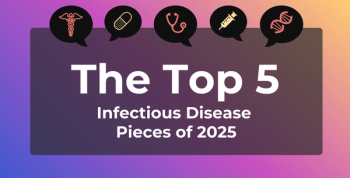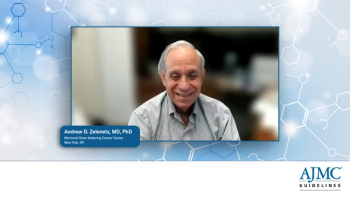
Neurostimulation Therapy for Migraine
Peter L. Salgo, MD: Let’s go a bit more off the reservation. We’ve got the gammaCore neurostimulation device. What is that?
Peter Goadsby, MD, PhD: GammaCore is a noninvasive vagus nerve stimulator. It’s used here, in the neck. It has a signal that will stimulate the vagus nerve. It has an effect on trigeminal processing in the brain. It’s been licensed for the acute treatment of episodic cluster headaches in the United States based on 2 randomized controlled trials, called ACT1 and ACT2. It’s been licensed for the acute treatment of migraine in the United States based on an Italian study called PRESTO.
Peter L. Salgo, MD: In your experience, have you used it?
Peter Goadsby, MD, PhD: Yes. I’ve used the gammaCore device in episodic cluster headache patients reasonably extensively. It does what it says in the randomized controlled trial data; it’s useful for the acute treatment of episodic cluster headaches. It’s effective, but it’s also pretty well tolerated. It doesn't have any real downsides, apart from having to stick it on your neck.
Peter L. Salgo, MD: You put stickers on your neck?
Peter Goadsby, MD, PhD: No, it’s got little electrodes on the edge. You put a bit of gel on your neck, then put the device on your neck, and you stimulate for 2 minutes.
Peter L. Salgo, MD: That’s it?
Peter Goadsby, MD, PhD: Yes. Well, you do it twice.
Peter L. Salgo, MD: You don’t walk around with this thing on?
Peter Goadsby, MD, PhD: No.
Jill Dehlin, RN: How long does it take to work in people with cluster headaches?
Peter Goadsby, MD, PhD: It works within 15 minutes. The pain-free rates and relief rates were observed at 15 minutes.
Jill Dehlin, RN: That’s fabulous.
Peter Goadsby, MD, PhD: Yes. Cluster headaches are a horrible problem.
Peter L. Salgo, MD: She called them suicide headaches.
Peter Goadsby, MD, PhD: Yes, exactly. One of the problems with triptans in cluster headaches is that cluster headaches tend to occur in males, often in smokers. Often, a smoking male who’s middle-aged has other problems.
Peter L. Salgo, MD: It’s a bad idea.
Peter Goadsby, MD, PhD: Yes, it’s a bad idea. So, it’s very useful to have an alternative to triptans in that group.
Jill Dehlin, RN: Did I hear you say in a conference that you had a patient with a beard?
Peter Goadsby, MD, PhD: I had a patient with a beard who shaved his beard just like a gammaCore shave, so he could always place the device in the right position. He’s very happy to wear it.
Peter L. Salgo, MD: So, you put this on briefly?
Peter Goadsby, MD, PhD: Yes, you hold it on.
Peter L. Salgo, MD: What percent of the people who try it get relief?
Peter Goadsby, MD, PhD: The pain-free rates at 15 minutes are about 30%.
Malaika Stoll, MD, MPA: For cluster headaches or for migraine?
Peter Goadsby, MD, PhD: Cluster headaches.
Peter L. Salgo, MD: Now, 30% is not huge, but compared to 0%, it is.
Peter Goadsby, MD, PhD: It’s excellent compared to not having a choice, if the triptan is contraindicated. Another thing that’s used in cluster headache is oxygen therapy, which is great. It’s effective. There’s good randomized controlled trial data, but it’s a little inconvenient during the day to lug the cylinder around. Like most of the things that we’ve been talking about, try to develop a portfolio of therapy so the patient can deal with the attacks, work, and continue with their life. That is important.
Peter L. Salgo, MD: It’s interesting that you bring up oxygen. If you have read the book, The Martian, the stranded astronaut who got headaches went right to the oxygen. The astronaut turned the oxygen up to 100% and said that it worked. How does it work?
Peter Goadsby, MD, PhD: Well, in cluster headache, it works. It probably works through turning off some nerves in the brainstem that are driven in the cluster headache process. There’s a group of nerve cells called the superior salivatory nucleus in the pons. A bit of data suggest that this drives some part of the trigeminal nucleus, and you can turn those off with oxygen.
Peter L. Salgo, MD: That’s fascinating.
Peter Goadsby, MD, PhD: Yes.
Peter L. Salgo, MD: I want to go back to the gammaCore device for a minute. Does it work without other drugs on board?
Peter Goadsby, MD, PhD: Yes.
Peter L. Salgo, MD: Does it work better if you’re able to take some other drugs?
Peter Goadsby, MD, PhD: Some patients who use it adjunctively with oxygen say the combination is better. I try and discourage people from using many, many things. I think it is better to focus on 1 thing that works properly rather than pile on stuff like a bouillabaisse.
Peter L. Salgo, MD: So you’re a therapeutic nihilist?
Peter Goadsby, MD, PhD: I wouldn’t say that. I’d like to think of myself as a focused…
Malaika Stoll, MD, MPA: Disciplined.
Peter Goadsby, MD, PhD: Disciplined person, thank you.
Malaika Stoll, MD, MPA: Otherwise, you don’t know what’s working.
Peter Goadsby, MD, PhD: Exactly. You’re then asking for payers to pay for 3 or 4 things. Whereas if you have 1 right option, the payer could pay for that. That would seem like a reasonable thing.
Newsletter
Stay ahead of policy, cost, and value—subscribe to AJMC for expert insights at the intersection of clinical care and health economics.







































